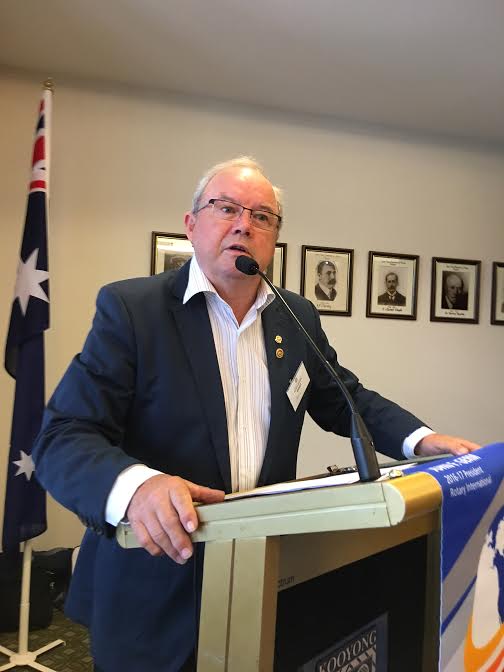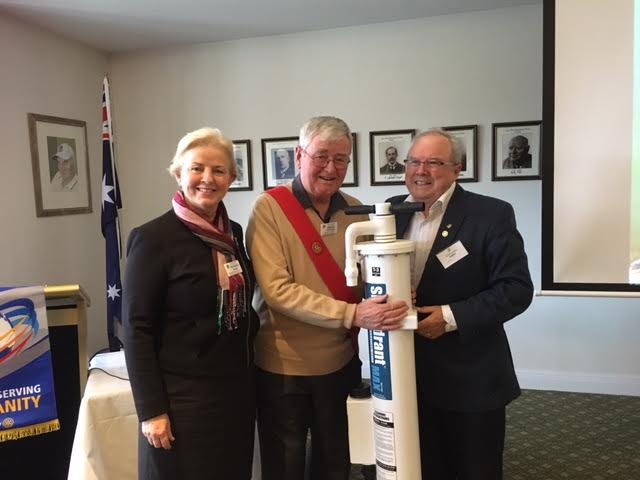 Disaster Aid Australia ("DAA")is a project of the Rotary Club of Endeavour Hills, Victoria Australia. DAA is affiliated with Disaster Aid international.
Disaster Aid Australia ("DAA")is a project of the Rotary Club of Endeavour Hills, Victoria Australia. DAA is affiliated with Disaster Aid international.Guest speaker John O'Reilly gave a brief description of the overall Australian project and in that highlighted the outstanding success and repute of one of its most successful and known products namely the SkyHydrant water purification unit.
John with a background in finance, followed by years running his own fashion label business and now semi-retired? is Treasurer for DAA.
His address aptly titled "A Child Not Having Drinking Water is a Disaster" included a succinct description of the device and some detail of its use in the near neighbor countries. These were ones which had experienced recent disastrous storm damage and disruption.
A particular example of its application was as part of efforts of the Disaster Aid Team in the north eastern region of the Philippines subsequent to their extreme monsoonal conditions last year. John showed photos of many happy childhood faces holding cups of "fresh" water.
Picture Below: President Meredith Hayes, MC David Corrigan and John embracing the SkyHydrant.

The device itself is a portable filter system (about 20kg --see image below) capable of purifying up 10,000 litres of water per day. Based on a series of microscopic pores ( 0.05 microns) it filters out pathogens and solid impurities. Chemical impurities e.g.. dissolved salts are NOT in its scope. Gravity fed, at worst in a few situations only a simple solar driven pump may be needed to supplement its operation. The cost of a fully installed placed unit was about $5000.
John also told of the operational model of Disaster Aid. "Smart Aid" he termed it had DARTS i.e disaster aid response teams of well trained individuals ,volunteers all, and ready to tackle an overseas disaster. Typically a couple from that would go to the impacted area. He noted the Rotary link. Contact with the Rotary club in the disaster area was critical and provided immediate logistic support and local knowledge from which appropriate action could be focused.
Although immediate externally sourced aid materials e.g. tents, food are brought in, in the short term into an impacted area, the philosophy of the relief effort was to get the locals involved. Having say the "headman" participate in the decision making process of the recovery activities provided that essential ownership element. It meant that longer term solutions prevailed and reconstruction efforts gave rise to improved permanent infrastructure and facilities.